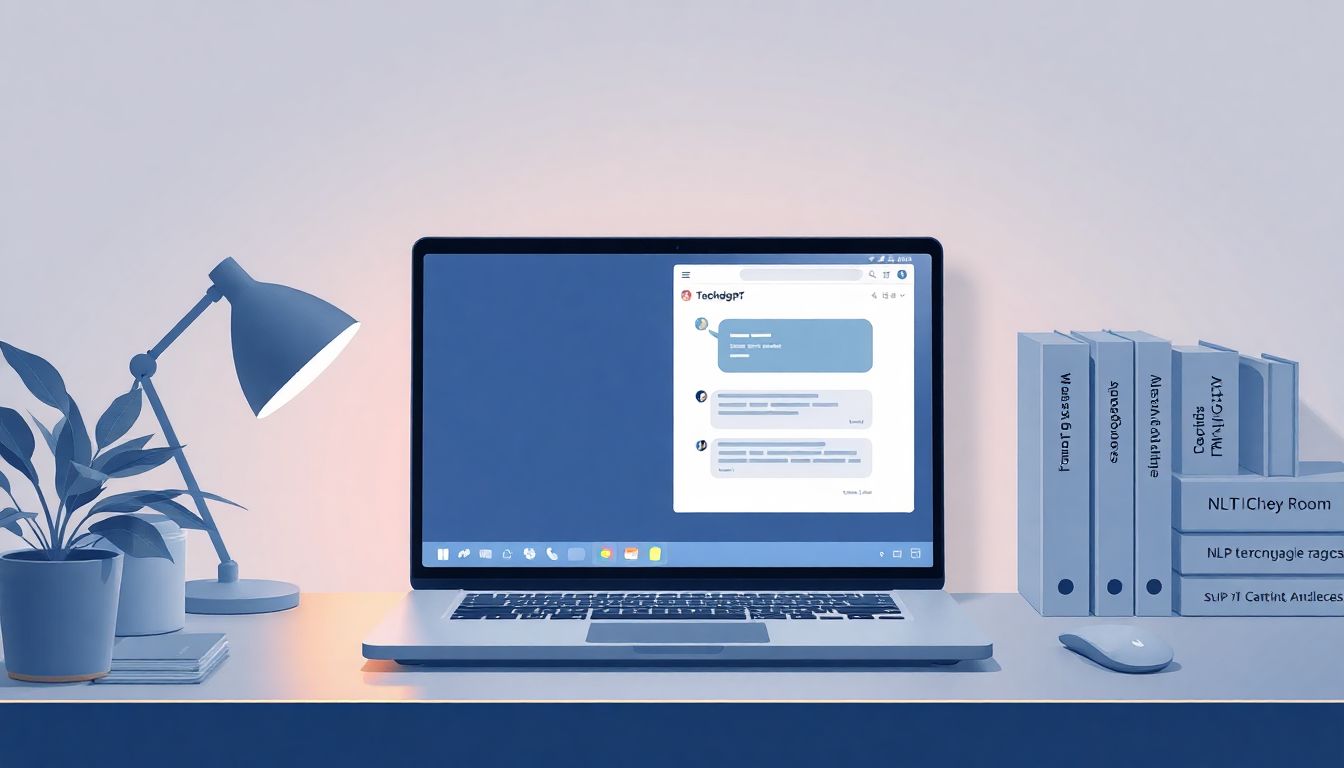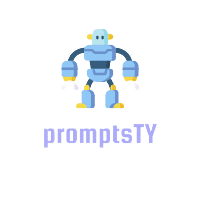Are you finding it tough to craft the perfect prompts for your natural language processing tasks using ChatGPT? You’re not alone! Many people struggle with getting the right questions or instructions to generate useful and relevant responses.
But don’t worry! If you stick with me, I’ll share some fantastic prompts and strategies that can skyrocket your NLP projects to new heights. You’ll get practical tips that can save you time and effort while enhancing your results.
We’ll explore everything from text classification to sentiment analysis and even machine translation. Ready to unlock the full potential of ChatGPT for your NLP needs? Let’s dive in!
Key Takeaways
- Effective prompts enhance your results in natural language processing tasks using ChatGPT.
- Use specific prompts for tasks like text classification, sentiment analysis, named entity recognition, and summarization.
- Prompts such as “Classify this text” or “Summarize this article” yield quick, relevant responses.
- NLP applications are transformative across industries, from healthcare to customer service.
- Machine translation prompts help ensure accurate translations across languages.
- Question answering prompts facilitate direct user inquiries for quick information retrieval.

Best ChatGPT Prompts for Natural Language Processing Tasks
When it comes to enhancing your natural language processing (NLP) tasks, effective prompts for ChatGPT can make a huge difference.
Here are some of the best prompts you can use:
- “Classify the following text into categories: [Your Text Here]”
- “Generate a concise summary of this text: [Your Text Here]”
- “Identify the sentiment in this review: [Your Review Here]”
- “Extract and list all named entities from the following text: [Your Text Here]”
These prompts are straightforward and tailored for specific tasks, ensuring you get relevant responses quickly.
Understanding Natural Language Processing and Its Applications
Natural Language Processing, or NLP, refers to the technology that enables machines to understand and respond to text or voice data in a way that is both valuable and meaningful.
With applications in various fields including healthcare, customer service, and marketing, NLP is transforming how we interact with machines.
For instance, in healthcare, NLP can streamline patient data processing and improve diagnostic accuracy.
In customer support, chatbots powered by NLP can handle inquiries efficiently, freeing up human agents for complex issues.
Simply put, NLP is not just about language understanding; it’s about creating solutions that lead to innovative processes across industries.
ChatGPT Prompts for Text Classification Tasks
Text classification is a critical NLP task that categorizes text into predefined categories, and using ChatGPT for this can enhance accuracy and efficiency.
Here are several prompts you can utilize for effective text classification:
- “Categorize this list of news headlines into sports, politics, entertainment, and technology: [Your Headlines Here]”
- “Label the sentiment of each comment as positive, negative, or neutral: [Your Comments Here]”
- “Classify these product reviews based on helpfulness: [Your Reviews Here]”
- “Identify and group these emails into categories like work, personal, and spam: [Your Emails Here]”
These prompts help pinpoint the specific needs of your text classification tasks, making it easier for you to analyze large volumes of text efficiently.
Using ChatGPT for Sentiment Analysis Prompts
Sentiment analysis is the process of determining the emotional tone behind a series of words, and ChatGPT can be a powerful tool for this task.
To effectively gauge sentiments, try using these prompts:
- “Analyze this customer feedback and determine if the sentiment is positive, negative, or neutral: [Your Feedback Here]”
- “What is the overall sentiment in this tweet? [Your Tweet Here]”
- “Evaluate the emotional tone of this product description and categorize it: [Your Description Here]”
- “Identify the sentiments expressed in this conversation: [Your Conversation Here]”
By employing these tailored prompts, you’ll be able to gain insights into customer attitudes and opinions, enabling more informed decision-making.

Prompts for Named Entity Recognition with ChatGPT
Named Entity Recognition (NER) is vital for identifying and extracting key information from text.
With ChatGPT, you can efficiently pinpoint entities like names, dates, and locations.
Here are some prompts you can use for effective Named Entity Recognition:
- “Identify and list all the named entities in the following text: [Your Text Here]”
- “Highlight the dates, locations, and organizations mentioned in this article: [Your Article Here]”
- “Extract the personal names and locations from this passage: [Your Passage Here]”
- “Provide a summary of the entities found in this document: [Your Document Here]”
These prompts will help you leverage ChatGPT to extract pertinent information, enhancing your data analysis capabilities.
Creating ChatGPT Prompts for Text Summarization
Text summarization allows you to condense lengthy documents into digestible pieces.
ChatGPT can generate concise and meaningful summaries that retain essential information.
For effective text summarization, here are some prompts you can use:
- “Summarize this article in three bullet points: [Your Article Text Here]”
- “Provide a brief overview of this paragraph: [Your Paragraph Here]”
- “Condense the following text into a 50-word summary: [Your Text Here]”
- “Create a summary that captures the main idea of this chapter: [Your Chapter Text Here]”
Using these prompts will enable you to quickly synthesize information, making it easier to retrieve key takeaways.
Utilizing ChatGPT for Machine Translation Tasks
Machine translation involves converting text from one language to another, and ChatGPT can assist in this process effectively.
Here’s how you can make the most of ChatGPT for translation tasks:
- “Translate the following text from English to Spanish: [Your Text Here]”
- “Provide a French translation for this paragraph: [Your Paragraph Here]”
- “Convert this English text into German: [Your Text Here]”
- “Translate the following dialogue while preserving the original tone: [Your Dialogue Here]”
These prompts will help ensure accurate and context-appropriate translations across different languages.
ChatGPT Prompts for Question Answering Systems
Question answering systems are designed to provide direct answers to user inquiries, and ChatGPT excels in this area.
To craft effective prompts for these systems, consider the following:
- “What are the key benefits of using AI in healthcare?”
- “Answer the following question based on the provided text: [Your Text Here]”
- “List the main points regarding climate change from this article: [Your Article Here]”
- “Provide answers to these FAQs: [Your FAQ Here]”
These prompts will facilitate smooth interactions, helping users find the answers they need quickly.

How to Write Effective Prompts for NLP with ChatGPT
Writing effective prompts for NLP with ChatGPT involves clarity, specificity, and an understanding of the task at hand.
Start by clearly defining what you want ChatGPT to do—whether it’s summarizing text, translating languages, or answering questions.
Use direct and straightforward language to reduce ambiguity.
For example, instead of saying “Tell me about climate change,” say “List the effects of climate change on coastal areas.”
Another key tip is to keep prompts concise; long or complex prompts may confuse the model.
You can also include examples in your prompts to give context.
For instance, “Translate this sentence to French: ‘Hello, how are you?’” gives a clear directive.
To make your prompts more engaging, adopt a conversational tone, as if you’re asking a friend.
Lastly, experiment with phrasing; sometimes, rewording a prompt can yield better results.
Tips for Customizing ChatGPT Prompts for Specific NLP Needs
Customizing ChatGPT prompts for specific NLP needs helps tailor responses to your unique requirements.
Start by identifying the particular challenge you want to address.
Make your prompts as specific as possible; for example, if you’re analyzing social media sentiment, specify the platform.
You can say, “Evaluate this tweet for sentiment: ‘I love the new features!’” to get a targeted response.
Incorporate industry-related terminology into your prompts to help ChatGPT understand the nuances of your field better.
For instance, if you’re working in finance, ask, “What are the implications of the stock market trends described below?”
Use constraints to guide responses, such as word limits or formats, to get the result you want.
For example, “Summarize this report in two sentences” or “List three main points from this article.”
Finally, don’t hesitate to iterate on your prompts based on the responses you receive, tweaking them until you find what works best.
Conclusion: Leveraging ChatGPT for NLP Tasks
Leveraging ChatGPT for NLP tasks can significantly enhance your efficiency and accuracy in handling language-related challenges.
The variety of prompts available allows customization for distinct needs, providing flexibility in application.
Through effective prompt writing and thoughtful customization, you unlock the full potential of ChatGPT for your specific tasks.
As NLP continues to evolve, tools like ChatGPT are becoming essential in bridging communication gaps and interpreting large datasets effortlessly.
Utilizing these strategies not only improves your outputs but also fosters a deeper understanding of language processing technology.
Embrace the versatility of ChatGPT, and watch as it transforms the way you interact with text and data.
FAQs
NLP applications include text classification, sentiment analysis, named entity recognition, machine translation, text summarization, and question answering. These technologies enable machines to understand and interact with human language effectively.
To create effective prompts for NLP tasks with ChatGPT, be specific in your instruction, provide context, and define the desired output format. Experiment with different phrasings to see what yields the best results.
Customize prompts by specifying the target audience, desired tone, and context of the conversation. Use examples relevant to your task to guide the model and ensure it aligns with your specific needs.
Sentiment analysis involves determining the emotional tone behind a series of words. ChatGPT can assist by providing nuanced interpretations of text sentiment and categorizing it as positive, negative, or neutral based on context.
